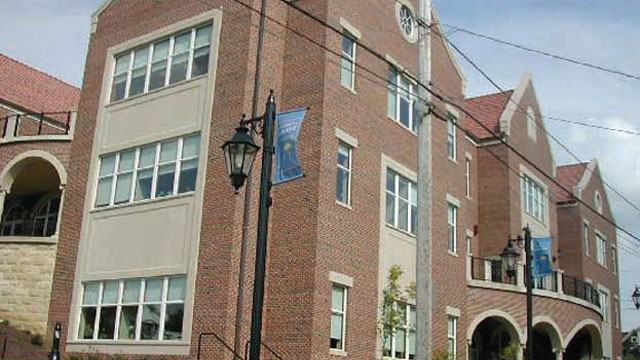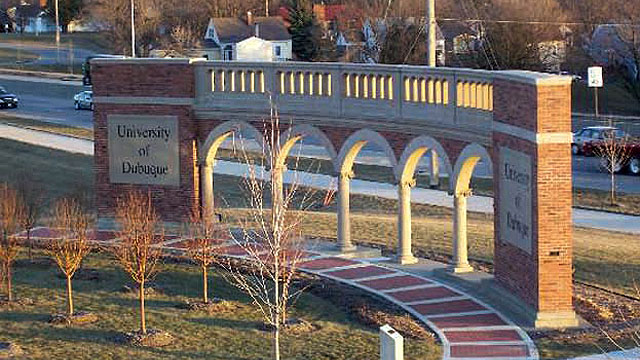July 27, 2011 7:00 AM CDT
Cummer applies this approach to all aspects of his business. He thinks about scaffold and the productivity various types will add to his operation. He developed and markets a more efficient mixer. Regarding cleaning, Cummer was trained to clean with a bucket and brush. He knew that if he could do the cleaning portion of the job faster, he could free up masons to lay more wall. He also could free up equipment, scaffolds and man lifts to use them elsewhere, realizing more value from the equipment he had.
To accelerate the cleaning process, Cummer purchased a patented Kem-O-Kleen Masonry Cleaning System long ago. The combination of chemical, chemical activating heat and simultaneous water agitation did the job. He says he has “one guy doing the work of three” with this equipment. Not only did he find he could free up his masons and equipment faster, but also he was able to use chemical more efficiently. With a bucket and brush, a good portion of the chemical had run down the wall and was lost in the dirt. Starting at the top of the wall, being able to precisely control the amount of chemical applied and apply it in the water stream, it flowed down the wall below in an even sheet. As a result, the chemical that was still active, started to evenly work on the wall below and was pretty well used up before it reached the soil. The wall below cleaned even faster, and required far less chemical.
Cummer varies which chemicals he uses to match the material. Regardless of the material and chemical, automating the process has improved his masonry, equipment, and chemical efficiency. And that has improved his business.

Ft. Devens is a large Army base in a wetlands area, in the towns of Ayer and Shirley in Middlesex County, and the town of Harvard in Worchester County, Mass. As you might imagine, it does not get much tougher than the Army Corps of Engineers when it comes to requirements, unless you also have a bunch of towns and counties in addition. The job was a complex of three, 28-foot tall buildings, containing about 95,000 square feet of masonry. The concern was that the run-off from the cleaning would pose a hazard to the ground. The Corps and city public works officials were pushing for lined trenches to collect all the run-off, transfer the run-off to 55-gallon drums, truck it off-site and treat it. That meant huge costs for capture, transportation and treatment. Rather than proceeding with the off-site treatment solution, the masons requested the opportunity to run tests. By precisely controlling the quantity of Vana Trol applied, the result was a run-off that measured 4.0 ph, which was within the tolerance range for on-site treatment. As a result, the decision was reached to put a small berm of lime around the wash area. Tests of the berm method came back with a ph in the 6.0 to 7.0 range. The expense of the off-site treatment plan was avoided, and the Corps and publics works officials were pleased with the outcome.
“I took a look at that machine with all those moving parts and didn’t want any part of it,” says Buford.
But his dad said, “I’ll take it.”
Today, Buford and his wife still operate one of the more successful masonry companies in Kentucky, L. A. Buford Corp. He has bought three Kem-O-Kleens over the years.
Buford drives by a local building that was cleaned with a bucket and brush, by another mason, more than 15 years ago, and says, “They are faded some by now, but you can still see the stripes pretty clearly.”
He has found himself cleaning in the fall, when the weather turned bad. The weather did not permit cleaning until the following spring, and he was able to complete the job with a perfectly consistent look. By controlling the application of chemical, temperature and water pressure precisely, the outcome is consistent. Buford and his brother cleaned a 48,000-square-foot, sandy brick wall, (always a challenge) perfectly consistently, in six hours. Glazed brick, scratch brick, light color, different types of mortar, different times of the year, different types of chemical – it doesn’t matter to Buford. He handles them all perfectly. Consistent process and consistent control of that process give you amazingly consistent results.
Automation and Control of Your Cleaning Process
Shared lessons from contractors
By Randy Weil

Conlon Collonade, University of Dubuque South Campus
Even with 40 years of experience manufacturing masonry cleaning systems, we learn new things from our customers every day. With that in mind, it seemed most valuable to share a few lessons from our customers. The focus is process automation and control. Hopefully, you will find them useful.Case Study #1 – Productivity of People, Equipment and Materials
Tom Cummer started as a mason in 1985. His company, Cummer Masonry, has grown one of the more successful masonry companies in Iowa, focused on both the commercial and residential markets. “Too many people are trying to make money with the wrong equipment, so they can save up for the right equipment,” Cummer says. He didn’t take this approach, and that was critical to his success.Cummer applies this approach to all aspects of his business. He thinks about scaffold and the productivity various types will add to his operation. He developed and markets a more efficient mixer. Regarding cleaning, Cummer was trained to clean with a bucket and brush. He knew that if he could do the cleaning portion of the job faster, he could free up masons to lay more wall. He also could free up equipment, scaffolds and man lifts to use them elsewhere, realizing more value from the equipment he had.
To accelerate the cleaning process, Cummer purchased a patented Kem-O-Kleen Masonry Cleaning System long ago. The combination of chemical, chemical activating heat and simultaneous water agitation did the job. He says he has “one guy doing the work of three” with this equipment. Not only did he find he could free up his masons and equipment faster, but also he was able to use chemical more efficiently. With a bucket and brush, a good portion of the chemical had run down the wall and was lost in the dirt. Starting at the top of the wall, being able to precisely control the amount of chemical applied and apply it in the water stream, it flowed down the wall below in an even sheet. As a result, the chemical that was still active, started to evenly work on the wall below and was pretty well used up before it reached the soil. The wall below cleaned even faster, and required far less chemical.
Cummer varies which chemicals he uses to match the material. Regardless of the material and chemical, automating the process has improved his masonry, equipment, and chemical efficiency. And that has improved his business.

Loras College Student Housing
Case Study #2 – Hazardous Materials and the Army Corps of Engineers
Michael Almeida learned masonry with Empire Masonry in the Boston area. He liked cleaning and became the in-house masonry cleaner for many years. A few years ago, he started his own cleaning business, and now does work for Empire and a number of the larger, more successful masonry companies in the area. His chemical of choice is Prosoco’s Vana Trol. Something of an innovator, while at Empire, Almeida championed the purchase of a Kem-O-Kleen Masonry Cleaning System. He found that he cleaned far faster and better than ever before, even with the challenges of a densely populated city full of tall buildings to clean.Ft. Devens is a large Army base in a wetlands area, in the towns of Ayer and Shirley in Middlesex County, and the town of Harvard in Worchester County, Mass. As you might imagine, it does not get much tougher than the Army Corps of Engineers when it comes to requirements, unless you also have a bunch of towns and counties in addition. The job was a complex of three, 28-foot tall buildings, containing about 95,000 square feet of masonry. The concern was that the run-off from the cleaning would pose a hazard to the ground. The Corps and city public works officials were pushing for lined trenches to collect all the run-off, transfer the run-off to 55-gallon drums, truck it off-site and treat it. That meant huge costs for capture, transportation and treatment. Rather than proceeding with the off-site treatment solution, the masons requested the opportunity to run tests. By precisely controlling the quantity of Vana Trol applied, the result was a run-off that measured 4.0 ph, which was within the tolerance range for on-site treatment. As a result, the decision was reached to put a small berm of lime around the wash area. Tests of the berm method came back with a ph in the 6.0 to 7.0 range. The expense of the off-site treatment plan was avoided, and the Corps and publics works officials were pleased with the outcome.
Case Study #3 – Consistency
Back in 1977, Tom Buford’s dad was looking at one of the first Kem-O-Kleen machines made. It was being demonstrated at the new Executive Inn construction site.“I took a look at that machine with all those moving parts and didn’t want any part of it,” says Buford.
But his dad said, “I’ll take it.”
Today, Buford and his wife still operate one of the more successful masonry companies in Kentucky, L. A. Buford Corp. He has bought three Kem-O-Kleens over the years.
Buford drives by a local building that was cleaned with a bucket and brush, by another mason, more than 15 years ago, and says, “They are faded some by now, but you can still see the stripes pretty clearly.”
He has found himself cleaning in the fall, when the weather turned bad. The weather did not permit cleaning until the following spring, and he was able to complete the job with a perfectly consistent look. By controlling the application of chemical, temperature and water pressure precisely, the outcome is consistent. Buford and his brother cleaned a 48,000-square-foot, sandy brick wall, (always a challenge) perfectly consistently, in six hours. Glazed brick, scratch brick, light color, different types of mortar, different times of the year, different types of chemical – it doesn’t matter to Buford. He handles them all perfectly. Consistent process and consistent control of that process give you amazingly consistent results.
Summary
Opportunities exist in the world of masonry cleaning that can contribute significantly to success. Process control and automation give you improved productivity of your people, equipment and chemical. Those savings last long after they have paid for that automation, and your business is better for it. Process control and automation can make your customers confident that you can meet their objectives, whether it is the ph level of run-off or the quality of the finished appearance of the structure. More important, process control and automation give you the capability to deliver that consistency under just about any circumstances.About the Author
Randy Weil is the President of Unique Industries.


















